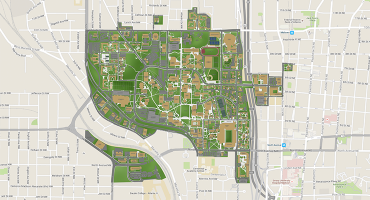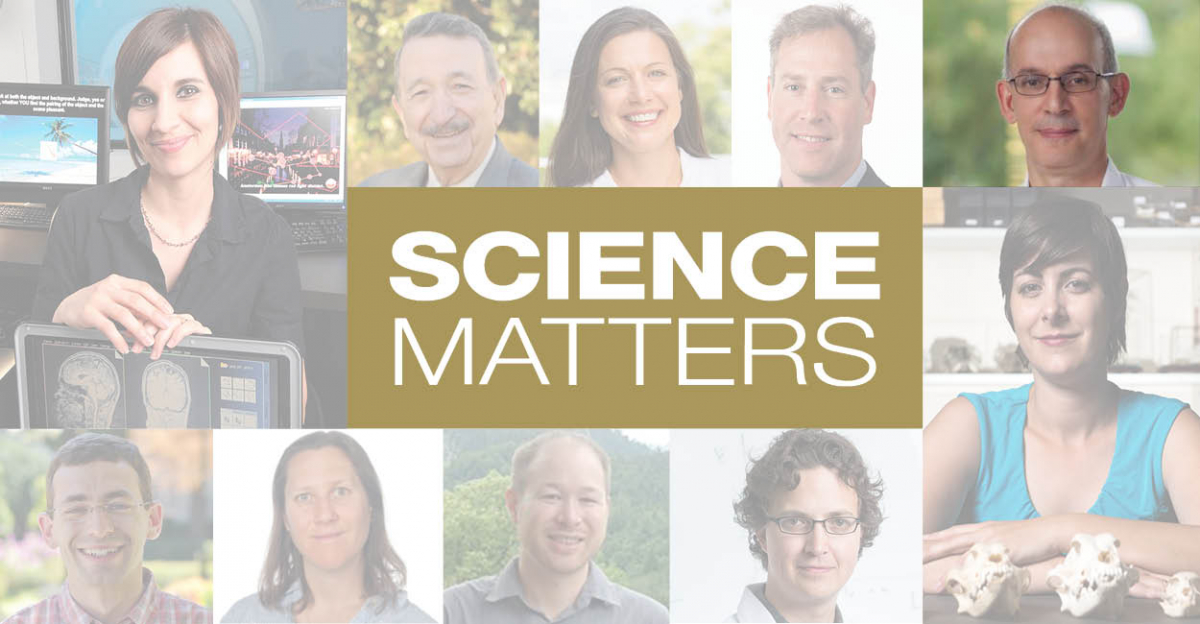
Download this episode
The parasite that causes leishmaniasis, a scary flesh-rotting disease, is tough to beat, says School of Chemistry and Biochemistry Professor and Chair M.G. Finn. It usually ravages equatorial countries but is now in North America. Finn is teaming with Brazilian scientists to work on a potential vaccine.
[Upbeat music]
- Renay San Miguel:
-
Hello, I’m Renay San Miguel, and this is ScienceMatters, the podcast of the Georgia Tech College of Sciences. It’s a disease usually found in developing countries. It can be scary to deal with, as Adam Spencer knows only too well.
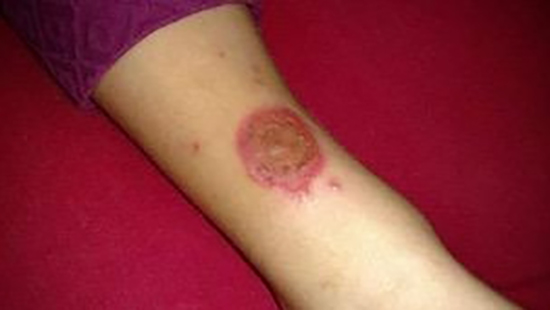 Adam Spencer video:
Adam Spencer video:-
Hi there, this is Adam Spencer, thank you for the people who have been giving me words of encouragement. I just wanted to respond to some of your questions about what the wound looks like now.
- Renay San Miguel:
-
The wound that Adam Spencer refers to in this YouTube video from September 2012 is a nasty-looking sore on his right cheek.
- Adam Spencer video:
-
This is what the wound looks like today. Just measured it, it’s about three centimeters high by two centimeters wide.
- Renay San Miguel:
-
Spencer is a filmmaker for ecotourism nonprofit companies. In early 2011, he visited Peru with his fiancée, Shaylynn. What he brought back from South America was a parasite called leishmania, the second deadliest parasite in the world according to the World Health Organization, or W.H.O.
The parasite is carried by sandflies, and that’s what Spencer believes bit him on his face in Peru. Spencer joined 350 million other people who are threatened by leishmaniasis, the disease carried by leishmania parasites, in more than 80 countries, mostly in South America, Asia and the Middle East. The W.H.O. website estimates 12 million people are currently infected.
Spencer’s medical battle with the parasite lasted nearly two years. He started a video blog to chart his progress and treatment. That got the attention of the cable show Monsters Inside Me, which featured him in October 2012. Monsters Inside Me narrator: A week later, Shaylynn discovers something terrifying.
- Shaylynn:
-
Two new lesions popped up on his back, so we knew it had gone systemic. It was a really, really hard time.
- Renay San Miguel:
-
The sore grew to cover nearly half of Spencer’s cheek before it responded to treatment. Spencer is now recovered, and as of 2017 was still making films for ecotourism nonprofit groups.
There are two forms of the disease: Cutaneous leishmaniasis is what Adam Spencer had. It is referred to as a flesh-eating disease, and it can be treated. Then there’s visceral leishmaniasis, which infects internal organs and can be fatal.
 M.G. Finn:
M.G. Finn:-
Leishmaniasis is an ancient scourge.
- Renay San Miguel:
-
That’s M.G. Finn, professor in the School of Chemistry and Biochemistry. In the midst of all this scary talk of flesh-eating diseases, he offers some optimism.
He and his Georgia Tech researchers have partnered with Brazilian scientists to develop a potential leishmaniasis vaccine. That’s something that has so far eluded science because of the unique challenges of this particular parasite.
The possible breakthrough comes at a good time. Leishmaniasis, up to now a challenge mostly in the Third World, isn’t limited to those countries any more.
- M.G. Finn:
-
The spread of the disease is entirely associated with the spread of the insect vector. So it spreads via a sandfly, which again goes by different names in different places, but that’s worldwide and climate change, global warming, makes this habitat of the fly go farther and farther north. So there are now documented cases of this fly and the disease, and related diseases such as Chagas disease, which is also a trypanosomal parasite, appearing now in the southern U.S., Texas and a few other states.
So there will be more attention in the U.S. as this insect vector creeps north. And as these types of diseases come into play we’re sort of not used to thinking about ourselves in the United States as being subject to these sorts of disease. But there’s no biological reason why we are immune. It’s been simply an accident of climate, and that is now changing.
- Renay San Miguel:
-
What makes leishmaniasis so difficult to treat? And why is there no vaccine yet?
- M.G. Finn:
-
These diseases are difficult to combat in many ways because they are so complex, and that statement is true for many parasitic diseases. Parasites are very clever, right? They don’t kill you by and large, they exist to multiply inside you and use you as a carrier.
- Renay San Miguel:
-
You’re the host.
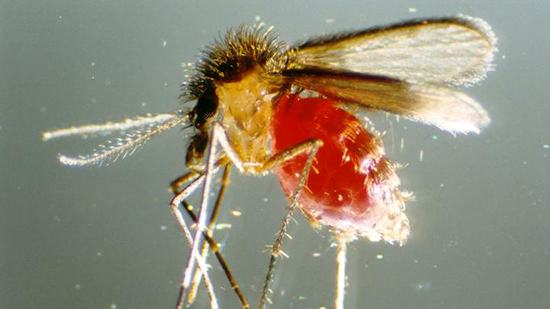 M.G. Finn:
M.G. Finn:-
You are the host, and of course sometimes they do make you sick as we’re discussing. But they do so; they achieve this symbiotic, or at least replicative, effect inside the host by a variety of very clever mechanisms. So it turns out to be a lot harder to find them and kill them than it might, for example, a bacterium that is obviously making you sick and it’s a single-cell organism and it has one way to do so.
Leishmaniasis is also a single-celled parasite, but it’s a much more complex organism. It goes through several life stage, life cycle changes to go from humans to the sandfly and back to humans. And in the human it traffics to different parts of the body. And each stage is manifested by a completely different molecular signature, sometimes even shape and certainly motility. All the different kinds of things that you would use to classify an organism can change for the same organism in the course of a single life cycle.
- Renay San Miguel:
-
So that’s a challenge.
- M.G. Finn:
-
It’s a really interesting and significant challenge. So here’s the question: If you have a target that’s morphing in shape and size and how fast it moves, and you have a single shot at it with your BB gun, what shape do you shoot at? How do you aim? And that’s really the challenge that we face when we try to design a vaccine. A vaccine is really in essence our ability, our attempt to trick our immune system into picking the right gun and firing it at the right time to hit the right form of the organism so as to prevent its spread.
- Renay San Miguel:
-
There’s got to be a weakness somewhere. Does this particular parasite have a weakness?
- M.G. Finn:
-
Well, we think we may have found one.
- Renay San Miguel:
-
That weakness involves sugar molecules, carbohydrates, which exist in every cell. Finn is partnering in this research with Professor Alexandre Marques of the Universidad Federales de Minas Gerais in Brazil. Marques is a parasitology expert. Finn says he’s the one who may have found this weakness. But first, a quick tutorial on the special role of carbohydrates in the immune response.
- M.G. Finn:
-
So every cell in nature is coated with carbohydrates for a very interesting reason. Carbohydrates are actually very good at shielding things from each other. They’re also very rich in terms of their structures. They have very different structures, very complex structures, so if you’re a cell and you want to signal to another cell that you’re you and not something else, you will put a certain carbohydrate on your surface, or a certain combination of carbohydrates, or the way you display them might be different, and you can transmit a lot of different information that way.
We don’t usually have a very strong immune system response to carbohydrates because they’re on every cell in our bodies. They’re on every cell in everything, and they pretty much look alike. Now they’re very different at the deep level of detail, but from 30-thousand feet, all carbohydates look pretty similar.
But they are different. It’s just subtle. So in general the immune system ignores them. But there are a few sugars that the immune system pays great attention to, and one of them in particular is what Alexandre and we are interested in. It’s called alpha gal, and it happens to be a marker, a foolproof marker of cells that are not us. And of course, the immune system exists to attack cells that are not us. For some reason — nobody knows why — this particular bond we no longer make, this particular molecule we no longer make. And so when our bodies detect that molecule, we know for sure, our immune system knows for sure that something else has brought it in and therefore, ‘all hands on deck, we’re going to attack.’
- Renay San Miguel:
-
Finn says that same molecule, alpha gal, is the main reason why surgeons can’t transplant organs from animals into humans. A pig heart shares a lot of similarities with a human heart, but the pig heart has alpha gal, which the human body would attack and reject. Finn and Marquez are hoping to get the same reaction with the leishmania parasite.
- M.G. Finn:
-
So Dr. Marquez’s insight was, he understood or he observed and read in the literature that people who are resistant to leishmaniasis in Brazil, they were tested, and they happened to have a higher level of immune response to this sugar than most other people. So the question was maybe that correlates with their ability to fight off the disease. And so the first step was to determine if this organism has this sugar on it, this alpha gal sugar. Nobody has determined that before, and Professor Marquez’s laboratory had found that they do. Not a surprise, but it was good to confirm.
The next question was, if we induce an additional immune response, you already have a pretty good immune response to this sugar, but if we try to mimic what’s happening in these naturally resistant people, let’s induce a better immune response to this sugar. Do we protect ourselves from this disease? So to test this idea you need an animal model of this mechanism.
- Renay San Miguel:
-
And to test this particular approach, you had to make some pretty important changes to those test subject’s mechanisms, didn’t you?
- M.G. Finn:
-
Correct. Fortunately somebody had already done that for us.
- Renay San Miguel:
-
The “test subjects” Finn is referring to are some very special mice.
- M.G. Finn:
- Because of the interest in transplantation, about 15 years ago somebody developed a new mouse that also lacks this particular enzyme that humans lack, and that old world primates lack, and therefore these mice also can’t make this sugar.
- Renay San Miguel:
- These were already around!
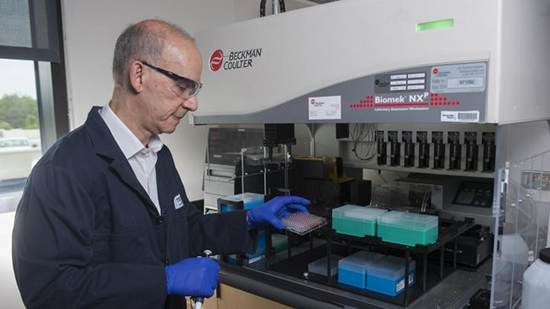 M.G. Finn:
M.G. Finn:-
These were already around, right. They had already existed for research for this other area of transplantation.
- Renay San Miguel:
-
Finn’s lab specializes in making vaccines that trick the immune system into recognizing certain sugars. He and his researchers soon discovered the vaccines were effective in preventing the spread of leishmania parasites in the mice. Finn and his team will continue to test and refine the vaccine on animals, including some brought to Georgia Tech from Brazil, where the sandflies and parasites are collected. Rigorous safety testing comes next for factors like toxicity and dosage.
Then the team will apply for a phase one clinical trial on humans, a tough Food and Drug Administration certification process that focuses on safety. Phase two would check on how effective the vaccine would be on humans in the field. That would require funding from groups with vaccine experience such as the W.H.O. or the Gates Foundation.
- Renay San Miguel:
-
Is there any way to speed things up with this?
- M.G. Finn:
-
Well, there are. This will depend upon the interest of these transnational organizations that we’re talking about. We’re not yet at the stage where we can engage them in productive conversation but that will happen within a year or two. And at that stage, they can decide whether or not to try to advance this on a faster timeline.
There are aspect of finances about this. A vaccine of this kind is not just something that somebody wants to make money on. You just, we just want to get it out there. However, the organizations that puts it out has to learn, of course, how to manufacture it, has to be protected in case, heaven forbid, something goes wrong. There are certainly hurdles to jump over even if you’re not concerned about making a dime.
- Renay San Miguel:
-
Finn hopes the same approach would work with other parasitic diseases. Several groups are pursuing carbohydrate-based vaccines, but these are among the least explored avenues to deal with these diseases. That has changed, Finn says, thanks to a revolution in immunology over the past 10 to 15 years.
- M.G. Finn:
-
We believe we’re beginning, in the very beginning stages of being able to rationally design a vaccine that engages multiple aspects of the immune system in the same way that the bug that makes you sick engages, because we’re trying to replicate what happens in a natural infection. Your immune system works great because you’re sitting here talking to me and you’re getting hit every day with trillions of viruses. Your immune system is on the job. And what we want to do is harness it to do what it normally does but without getting you sick in the process.
- Renay San Miguel:
-
And it all starts with the basic chemistry lessons that a first-year student might encounter at Georgia Tech, such as the role of sugars. Various scientific disciplines are now joining forces to take on problems like the spread of the leishmania parasite.
- M.G. Finn:
-
It all combines, this is why a major research university like Georgia Tech is just the best place in the world to do science now, because no problem that’s important is restricted to a single discipline. No problem is restricted to a single location. As you were talking about before, science is a collaborative enterprise and we do this very well at Georgia Tech, and so that’s why I like being here. [Upbeat music]
- Renay San Miguel:
-
My thanks to M.G. Finn, professor in the School of Chemistry and Biochemistry. Our thanks also to Siyan Zhou, first-year Ph.D student and a former research associate in the School of Psychology. She composed our theme music. I’m RSM, and you’ve been listening to ScienceMatters, the podcast of the Georgia Tech College of Sciences. [Upbeat music]

